Ramada Hotel & Suites by Wyndham Seoul Namdaemun / 라마다 호텔앤스위트 서울남대문
58.1M 2025-08-12
27, Chilpae-ro, Jung-gu, Seoul
+82-2-775-7000
Ramada Hotel & Suites by Wyndham Seoul Namdaemun is located in Sunhwa-dong, Jung-gu, at the center of Korea’s capital. Its location gives guests excellent access to Seoul’s major tourist sights, and some major sights like Namdaemun Market, the City Hall, Myeongdong, Gwanghwamun Gate, and Deoksugung Palace are reachable on foot. Seoul Station and City Hall Station are located nearby for good access to public transportation. The hotel is often used by international visitors to Seoul.
There are 244 rooms in total, from Superior Double and Twin to Deluxe Double and Twin, Triple, Premier Twin, Quad, Junior Suite Double, Corner Suite, Atrium Suite Family, etc. Facilities include a restaurant, a conference room, a cafe, an underground arcade, and a currency exchange kiosk. The business center offers copying, printing, scanning, and fax services. Up to 2 dogs can be brought into the room, but dogs carry a surcharge for cleaning per day and dog.
Parc de l'histoire Seosomun (서소문역사공원)
230.5M 2023-09-14
5, Chilpae-ro, Jung-gu, Seoul
+82-2-3396-5852
La zone de la porte Seosomun était auparavant un site de persécution durant le 19ème siècle qui a été transformé en parc. De nombreux catholique furent persécutés sur place faisant de ce site un site sacré pour les catholiques en Corée.
La porte Seosomun constitue un passage vers le marché Chilpae près de la porte Namdaemun.
Le 15 mai 1999 une tour commémorative fut inauguré au centre du parc pour commémorer les martyrs. En 2013, le district Jung-gu a également inauguré le Musée d'Histoire Seosumun.
Musée d’histoire et de mémoire de Seosomun (서소문성지역사박물관)
255.7M 2025-08-21
5, Chilpae-ro, Eujuro 2(i)-ga, Jung-gu, Séoul
Le Musée d’histoire et de mémoire de Seosomun, inauguré en juin 2019, est un lieu consacré à la mémoire des chrétiens catholiques persécutés et martyrisés. On peut y découvrir des expositions liées aux persécutions religieuses ainsi que des œuvres artistiques. Chaque jeudi, une visite guidée historique de Seosomun est proposée, permettant d’approfondir la connaissance du sanctuaire et de l’histoire du catholicisme en Corée. Le musée est situé au sein du parc historique de Seosomun. Au deuxième sous-sol se trouve la salle d’exposition permanente, tandis qu’en descendant encore un niveau, on accède à la « Place du Ciel ». Cet espace, conçu sous la forme d’un sobre carré ouvert à la lumière, exprime le recueillement et traduit le poids de la douleur et de la tristesse des persécutions. L’endroit est également reconnu pour son architecture, qui attire de nombreux visiteurs. En 2019, il a reçu le Grand Prix d’excellence des Prix d’architecture de la ville de Séoul.
Porte de Sungnyemun (Namdaemun) (숭례문)
294.7M 2022-08-03
40, Sejong-daero, Jung-gu, Seoul-si
+82-2-779-8547
La Porte Sungnyemun est le Trésor National N° 1, souvent appelée Namdaemun. Etant la plus grande porte en Corée, la Porte Namdaemun a une entrée de la forme d’une arche, au centre d’une plateforme en pierres. Le pillier et le toit sur la plateforme se divise entre une couche supérieure et une couche inférieure. Il y a une porte pour pouvoir passer à chacune des portes à l’est et à l’ouest. Les herbes vertes entourant la plateforme sont la preuve qu’il s’agissait bien du mur d’un château. Lorsque le premier roi de la Dynastie Joseon, Lee Seong-Gye (règne 1335-1408), a construit la ville capitale, il croyait que le feu atteindrait le Palais Gyeongbokgung, de même que la ville capitale, parce que le Mt. Gwanaksan de Séoul à la forme d’un feu, d’après les principes de Feng-Shui. C’est pourquoi, la tablette sur la Porte Sungnyemun a été inscrite verticalement afin de protéger la ville d’un incendie parce que les caractères chinois qu’on écrit dans le sens horizontal, ressemblent à un feu. L’idéographe de la tablette de la Porte Sungnyemun est solennel, élégant, puissant et décent. L’ idéographe est fameux pour le caractère du Prince Yangnyeongdaegun (règne 1394~1462), le premier fils du Roi Taejong (1367-1422) de la Dynastie Joseon. Comme il est situé au centre d’une grande route, c’est difficile de voir de près la Porte Sungnyemun mais on peut la voir facilement quand on prend un autobus ou marche dans la rue. La nuit, la lampe de mercure sous la Porte Namdaemun s’ajoute à sa beauté naturelle.
Musée d'histoire Baejaehakdang (배재학당역사박물관)
338.8M 2021-10-05
Séoul, Junggu, Seosomun-ro 11gil 19
+82-2-319-5578
Baejaehakdang est la première école d'architecture occidentale construite en Corée, en 1885 par Henry Gerhart Appenzeller (1858~1902). Le but premier de cette structure était l'enseignement de l'anglais, avant de devenir un grande centre d'instructions ayant formé quelques grands intellectuels en Corée. La structure est divisée en plusieurs écoles, avec son université, son lycée, et son collège.
Musée d'histoire de Baejaehakdang
Le musée a été fondé dans les murs du bâtiment Baejaehakdang en 2008, bâtiment classé au patrimoine coréen. En plus des expositions régulières et temporaires, le musée propose également des programmes d'éducation.
Centre des lunettes de Namdaemun (남대문 안경상가)
388.6M 2025-08-21
Namchang-dong, Jung-gu, Séoul
Centre commercial de Namdaemun 02-753-2805
Le marché de Namdaemun regroupe plus de 150 magasins de gros et de détail spécialisés dans les lunettes, ce qui représente plus de 50 % de la distribution nationale dans ce secteur. Les boutiques se concentrent principalement à Namchang-dong, derrière le centre d’importation de Sungnyemun, ainsi que dans le bâtiment principal du marché, le centre commercial de Namdaemun, au 2ᵉ étage du théâtre de Namdaemun, le long de la rue piétonne de Namdaemun-ro et à l’entrée du marché sur Toegye-ro, notamment dans le complexe “Segyero Optical Town”. Certaines enseignes sont également dispersées dans d’autres zones. Parmi ces magasins, certains de grande taille produisent et vendent leur propre marque, tandis que d’autres travaillent en lien direct avec des usines sous-traitantes. Dans les deux cas, les consommateurs peuvent acheter des lunettes 30 à 50 % moins cher que les prix pratiqués sur le marché classique.
Musée d’art de Séoul (서울시립미술관)
431.0M 2023-10-17
61, Deoksugung-gil, Jung-gu, Seoul
+82-2-2124-8800
Le Musée d'Art de Séoul met à l'honneur l'art moderne coréen et international à travers ses six galeries. De grandes expositions internationales s'y tiennent tous les cinq à six mois. Depuis mai 2002 se tient en exposition permanentes autour des oeuvres de l'artiste coréenne Chon Kyung-ja. Des visites guidées en anglais de l'exposition permanente sont possibles les samedis et dimanches. Après la visite du musée, vous pourrez vous balader le long du mur en pierre du palais Deoksugung, visiter le théâtre Chongdong pour voir un spectacle traditionnel ou aller voir le spectacle Nanta au théâtre Nanta.
Gare culturelle de Séoul 284 (ancienne gare de Séoul) (문화역서울 284)
500.7M 2023-04-26
426, Cheongpa-ro, Jung-gu, Seoul-si
+82-2-3407-3500
L’ancien bâtiment de la gare de Séoul a été conçu par Tsukamoto Yasushi, professeur à l’Université de Tokyo. La construction de la station a commencé en juin 1922 et a été complété en septembre 1925. Avant la construction du bâtiment, la gare de Séoul était seulement un bâtiment en bois à 2 étages (33 m²) appelé « l‘arrêt Namdaemun ». Il était situé entre la gare de Séoul actuelle et Yeomcheongyo et était un arrêt pour la ligne de train Gyeongin (Séoul-Incheon). Le nom de la station est devenu « station Gyeongseong » en octobre 1910 et quelques années plus tard, 3 lignes de trains supplémentaires ont été ouvertes (ligne Gyeongbu en 1904, ligne Gyeongui en 1905, et ligne Gyeongwon en 1914).
Le nouveau bâtiment à 2 étages (niveau inférieur 1 et 1 niveau supérieur) a été construit en bois et en brique avec une toiture en ardoise soutenue par une armature en fer. Le premier étage a été bâtit dans un style Renaissance et le second étage a été décoré avec des briques rouges et du granite.
Après que la Corée ait regagné son indépendance face à la colonisation japonaise, le gouvernement américain a pris le contrôle de la station Gyeongseong (1946) et en 1947, le nom est alors devenu « Gare de Séoul ».
Marché Namdaemun (남대문 시장)
519.8M 2024-05-17
21, Namdaemunsijang 4-gil, Jung-gu, Seoul-si
+82-2-753-2805
Le marché de Namdaemun est un quartier commerçant qu'aucun touriste à Séoul ne se doit de manquer.
Trésor national no.1 depuis la dynastie Joseon, la porte Namdaemun aussi appelée Sungryemun a plus de 600 ans d’histoire. Sur plus de 66 hectares et avec plus de 10 000 magasins et échoppes, le marché de Namdaemun joue un rôle important en déterminant le prix à la consommation de Séoul.
Articles
Le marché de Namdaemun gère plus de 1 700 types de marchandises différentes, y compris des produits de consommation courante tels que des vêtements, ustensiles de cuisine, papeterie, fleurs, accessoires, aliments, produits de la mer et agricoles tout comme des objets d'art folkloriques, produits locaux et des marchandises importées. On dit à Séoul « Il n’y a rien que vous ne pouvez trouver à Namdaemun ». La vente se fait aux particuliers et aux professionnels.
Information sur les prix
Vous y trouverez tous les articles à environ 10-20% moins cher que sur les autres marchés car à Namdaemun, les magasins souvent fabriquent eux-mêmes leurs propres produits et vous pouvez donc les marchander. Le prix est plus bas mais la qualité reste excellente.
Plus de 3 000 à 4 000 étrangers visitent ce marché de Namdaemun tous les jours
Heures d’ouverture
Les horaires d'ouverture sont différentes pour chaque magasin. Les magasins de gros et de détail sont ouverts de 23h à 4 h du matin et les magasins pour le grand public ouvert de 8 h à 19h. Des marchands des quatre coins du pays viennent sur le marché à 3 h du matin pour faire leurs affaires
Observatoire de Jeongdong (정동전망대)
531.9M 2022-08-18
15, Deoksugung-gil, Jung-gu, Seoul
+82-2-120
L'observatoire Jeongdong se situe au 13ème étage de la tour Seosomun de l'hôtel de ville. On trouve dans l'observatoire un café où chacun peut profiter d'une boisson rafraîchissante. Sur les murs ducafé, les visiteurs peuvent apprécier d'anciennes photos de Jeongdong. L'observatoire est connu pour offrir de belles vues sur le palais Deoksugun.
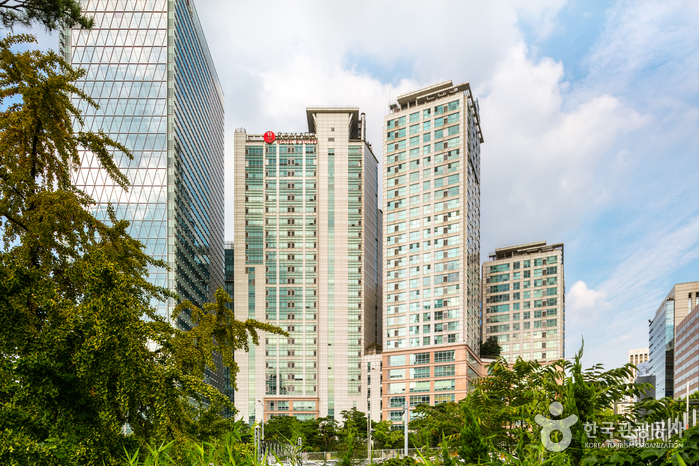
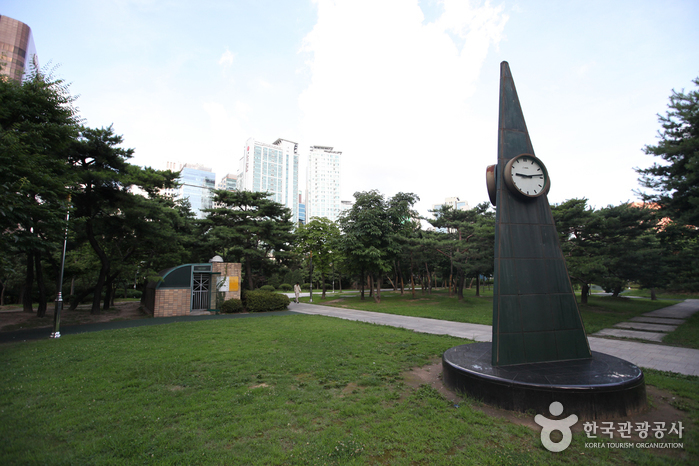
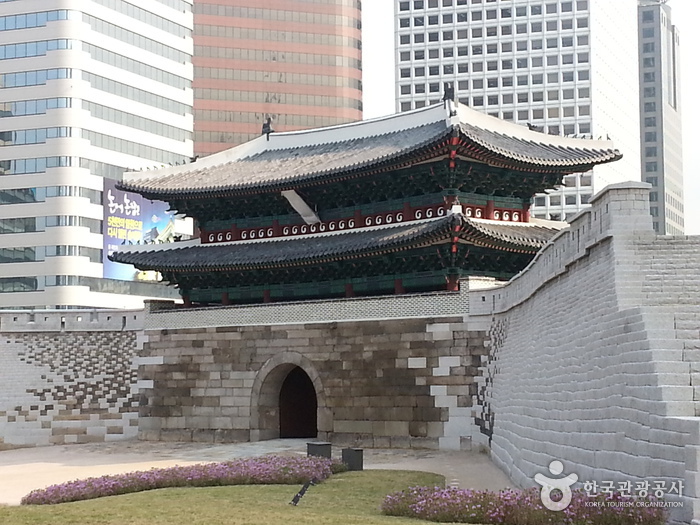
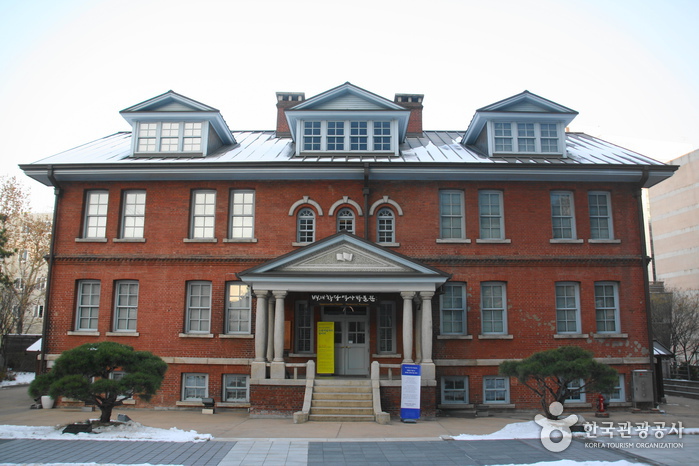
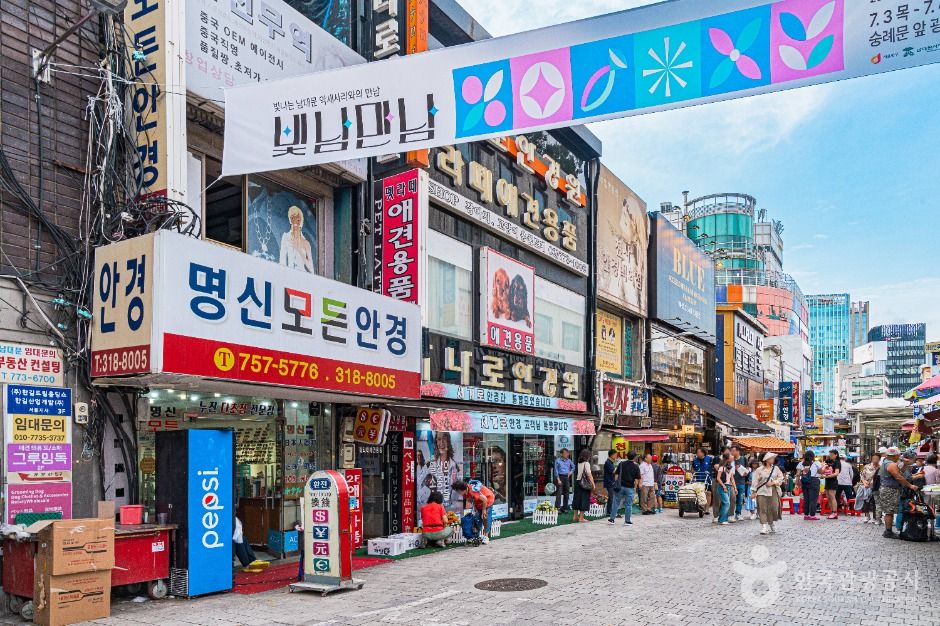
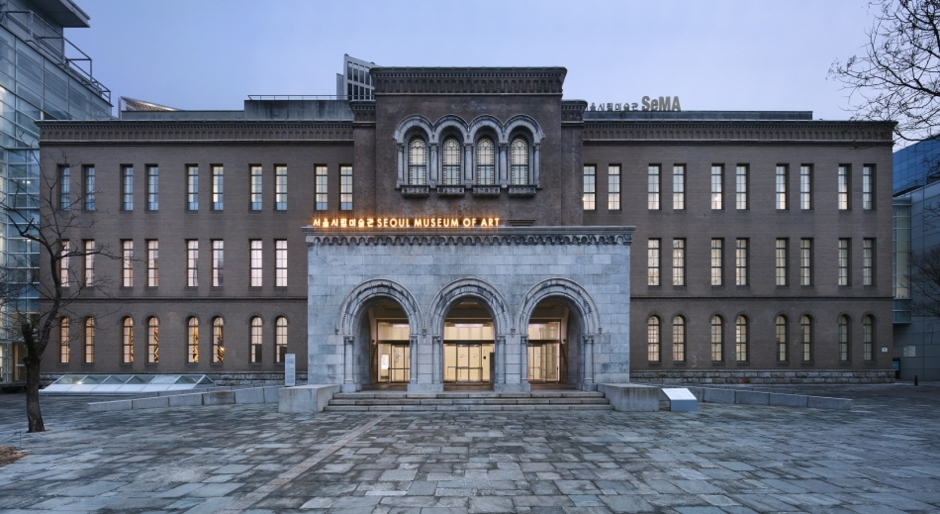
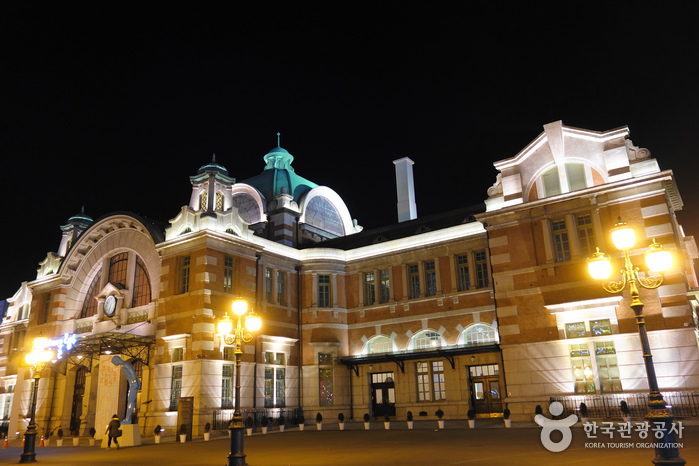
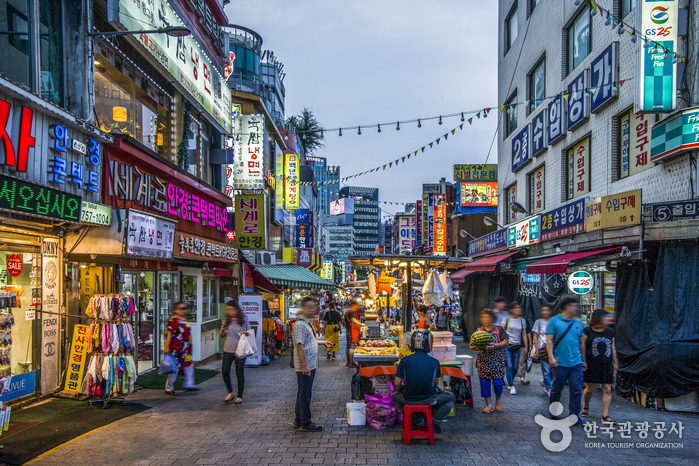

 Français
Français
 한국어
한국어 English
English 日本語
日本語 中文(简体)
中文(简体) Deutsch
Deutsch Español
Español Русский
Русский